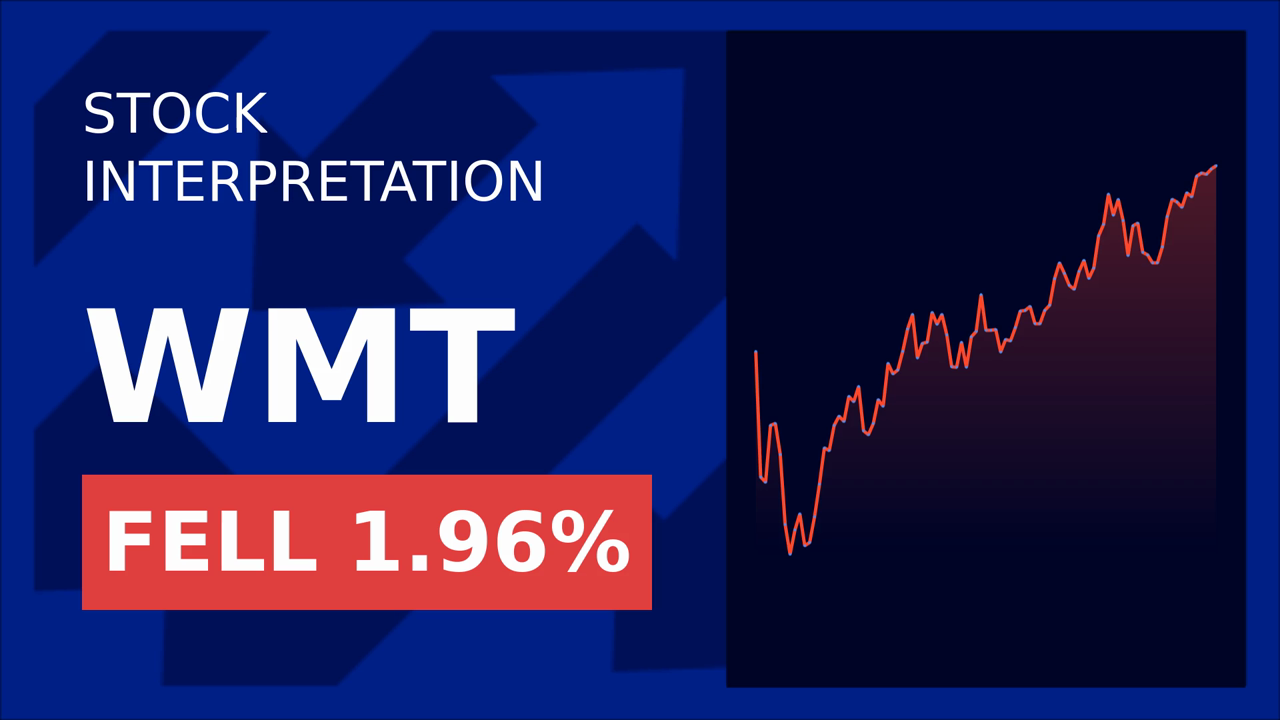Why Walmart's Stock Surged 11% in April: Tariffs, Tech, and Trust Drive the Rally
The retail giant Walmart saw its stock climb 11% in April 2025, defying broader market volatility and signaling a renaissance in investor confidence. This surge wasn’t random—it stemmed from a strategic cocktail of tariff resilience, e-commerce dominance, margin expansion, and shareholder-friendly moves. Let’s unpack how Walmart turned uncertainty into opportunity.

1. Tariff Resilience: A "Safe Stock" in a Storm
Investors flocked to Walmart as a hedge against escalating tariffs on Chinese and Vietnamese imports. Two-thirds of its U.S. sales come from domestic sources, shielding it from direct cost pressures compared to rivals reliant on offshore manufacturing. CFO John Rainey underscored this advantage: “When we lean into these periods of uncertainty, Walmart emerges on the other side with greater share and a stronger business.”
The reveals how Walmart’s insulation from these policies became a key differentiator. Competitors like Target and Best Buy, with higher foreign exposure, faced margin squeezes, while Walmart’s stock became a refuge.
2. E-Commerce Powerhouse: Growth at Scale
Walmart’s digital arm has been a profit engine. In the fiscal fourth quarter (ended January 31, 2025), total sales rose 5.3% (currency-neutral), with e-commerce sales soaring 16% year-over-year. For the full fiscal year, e-commerce grew 21%. This acceleration wasn’t accidental.
Walmart’s illustrates how its 5,000+ stores serve as distribution hubs, enabling same-day deliveries at a fraction of Amazon’s costs. This “phygital” strategy—not just a website but a logistics network—has allowed Walmart to undercut competitors on price and speed, even in urban markets.
3. Margin Expansion: The Path to Profitability
The stock’s rise wasn’t just about top-line growth. Walmart’s plan to widen margins by scaling high-margin businesses—like Walmart+, its subscription service, and its connected TV advertising via Vizio—has investors excited. Management reaffirmed fiscal 2026 guidance: 3%-4% sales growth and a 3.5%-5.5% rise in operating income, despite headwinds like tariffs.
4. Valuation and Dividends: A Rare Combination
At a P/E ratio of 41—unusually high for a “safe stock”—Walmart’s valuation hinges on its growth narrative. The 0.9% dividend yield, while modest, appeals to income-seeking investors in a low-yield world.
5. Strategic Moves: Beyond the Checkout Line
Walmart isn’t just selling groceries anymore. Its $3 billion acquisition of Vizio aims to turn TVs into advertising screens, while Walmart+’s streaming services and fuel discounts lock in customers. These moves signal a shift toward data-driven, subscription-based revenue—a lifeline in a world where Amazon and Google dominate digital advertising.
Market Context: Outperforming in Volatility
While the S&P 500 and Nasdaq gyrated in April, Walmart’s stock rose 18.7% in the month prior to the surge, driven by its reaffirmed guidance and value-driven retailing. Even with the Zacks Rank assigning a “Sell” due to valuation concerns, momentum investors piled in.
Conclusion: Walmart’s Resilience Is No Accident
Walmart’s 11% April rally was a masterclass in leveraging structural advantages. Its tariff insulation, e-commerce execution (16% growth), margin roadmap (5.5% operating income rise), and strategic bets like Walmart+ and Vizio create a moat against rivals.
Crunching the numbers:
- E-commerce sales grew 21% annually, a critical driver in a $2 trillion U.S. e-commerce market.
- Walmart+ has 43 million members, up 30% since 2023, generating $10 billion in annual revenue.
- The stock’s 41 P/E ratio reflects growth optimism, even if it’s double the S&P 500 average.
For now, Walmart’s blend of stability and innovation justifies its gains. But investors must monitor execution risks—tariffs could ease, inflation might abate, or competitors could catch up. Still, in a world of retail disruption, Walmart’s hybrid model and shareholder focus make it a rare winner. The question isn’t whether it can keep growing—it’s whether it can grow fast enough to justify its price.


_d6548da11749819995064.jpeg)







